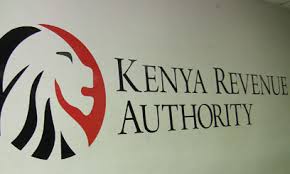These are the prevalent way of merging or separating traffic in Kenya.
They are simple, low cost and extremely efficient – so long as the drivers are disciplined and courteous.
However, these roundabouts are translated by Kenyan drivers into traffic snarl up generators.
Instead of operating unmanned, they require police and roundabouts to deal with the indiscipline.
This week we look at intersections which are mainly light controlled.
The United States of America leads the world in the density intersections.
Most of these are light controlled though there are a few intersections which do not have lights and rely on the discipline of drivers to function.
These function just as well as the light controlled ones.
So what are the positives for intersections ?
The first positive is that lights are generally used to control intersections.
In the early days, traffic lights at such intersections were based on timers and they would switch to green in a certain sequence and for a certain period of time.
These controls were not sensitive to traffic density so one could arrive just as the lights turned red and then wait for a long time whilst the sequence opened up the other roads into the intersection.
This sequence would work its way round even when there were no vehicles waiting to cross the intersection.
The first improvement on this was to have the lights sequenced during high traffic periods.
This meant that they would work in a sequenced way from say six in the morning till eight at night.
In between eight in the evening and six in the morning the lights would be flashing for all users of the intersection.
This meant that each driver on approaching the intersection would use normal road etiquette to navigate through it.
For countries which drive on the left hand side of the road, this meant that one would always give way to traffic from the right – just like happens on roundabouts.
It also meant that a driver would only enter the heart of the junction if their intended exit was clear.
Otherwise (Kenya style) they could end up stopped in the middle of the intersection and prevent other streams of traffic that could have been moving from doing so.
Where there is discipline (and there is plenty of that in the USA) the process works well.
The next refinement was that sensors were put at a distance before the intersections to measure the density of traffic.
The sequencing of lights would then be based on traffic density rather than on fixed predetermined time.
With the advent of computer controls, simple algorithms could then be put in to control traffic movement based on an agreed priority listing.
Add CCTV and cameras at suitable locations then the data and information available to programme traffic lights makes this system very responsive to real situations on the ground.
With roundabouts, responses to this mine of information (now called Big Data) would not be possible unless of course the roundabouts are embellished with traffic lights!
The main downside of intersection is that the speed at which collisions can occur can be quite high.
This is linked to the propensity for drivers to try and make the last minute squeeze through as the lights change to red.
Because the vehicle is likely to travelling straight through, the driver is probably accelerating.
This can result in head on collisions as well as oblique frontal collisions as well. Even when it is a side collision, the vehicle to vehicle impact is much higher than for a similar accident happening on a roundabout.
In addition to speed, research shows that so called accident conflicts increase around fourfold when you have an intersection compared to a roundabout.
For a roundabout there are eight conflict zones on the approach and roundabout where vehicle accidents can occur.
As for pedestrians there are also eight but different conflict zones.
However when one considers an intersection the numbers for these conflict zones are thirty two for vehicles and twenty four for pedestrians.
To illustrate the effect of speed, the same research showed that at 30 kilometers an hour, nine out of ten pedestrians would survive a collision.
At fifty kilometers and hour the number drops to five out of ten people who would survive a collision.
At seventy kilometers an hour only one person out of ten would survive a collision.
So in reality, whilst intersections are good for increasing the speed of movement, they have serious downsides.
They increase the risk of collisions happening and also increase the severity of a collision due to speed.
Common wisdom is that the best combination for traffic control and management is to have traffic light controlled roundabouts.
It gives the best of both worlds.
It allows for traffic movement to be optimised using centrally controlled traffic management systems to decide whom moves using lights.
It also minimises the likelihood and severity of accidents by reducing the conflict points as well as vehicle speeds.
Kachumbari tells me of a time when he was in the UK and attended a meeting of associations that support the preservation of roundabouts.
The key comments made during that meeting which still resonate with him till today are that “traffic lights are fascist and dictatorial because they tell you when to stop and go. Roundabouts however, are quintessentially British and democratic relying on etiquette and good manners”.
There is also the chance of embellishing roundabouts with other more pleasant features such as greening, decorating and even having facilities such as restaurants on the larger ones.
As Kachumbari says, optimization is the key!



![Top 20 Used Cars to Avoid in Kenya [PHOTOS]](../../../blog/wp-content/uploads/2013/11/nissan-370z.jpg)

